Every home should be a safe haven—a place that not only looks great but feels energetically balanced and supportive. If you've ever walked into a room and felt instantly calm or, on the flip side, slightly uncomfortable, you've experienced the flow of energy. The ancient practice of feng shui gives us a way to understand and improve this flow.
One of the most powerful and easy-to-use tools in this practice is the smart use of feng shui indoor house plants. These living beings are more than just decoration; they actively participate in your home's energy system. They bring in vibrant life force energy, known as Chi, which is the foundation of a healthy and balanced environment. By learning how to work with plants, you can actively create positivity, abundance, and well-being.
This guide will give you a clear plan. We will explore which plants are best for attracting specific energies, where to place them for the biggest impact using the Bagua map, and the deeper principles that turn simple plant care into a life-changing practice.
The Living Power of Plants

To master the use of plants in feng shui, we must first understand why they are so important. In the feng shui system, everything is made up of five elements: Wood, Fire, Earth, Metal, and Water. Plants are the main representation of the Wood element, which stands for growth, vitality, flexibility, and new beginnings.
The main goal of feng shui is to encourage the flow of positive life force energy, or Sheng Chi. When this energy becomes blocked or stuck, it creates Sha Chi, or negative energy, leading to feelings of tiredness, frustration, and being "stuck." Living, breathing plants are a direct solution to this stagnation. Their upward growth and vibrant life force actively move and refresh the Chi in a space. This physical benefit of cleaning the air directly matches their energetic function: they cleanse the environment on both a physical and energetic level.
Here are the key benefits of adding plants to your home's feng shui:
- Bring in Vibrant Life Force (Sheng Chi): A healthy plant is a constant source of positive energy, fighting stagnant areas and energizing your home.
- Represent Growth and Abundance: The Wood element's connection to growth makes plants powerful symbols for personal development, career advancement, and increasing wealth.
- Soften Sharp Angles: Sharp corners from walls, columns, or large furniture create "poison arrows" of fast-moving Sha Chi. A full plant placed in front of a corner can soften this harsh energy, creating a gentler flow.
- Connect to Nature: In our modern lives, we are often disconnected from the natural world. Bringing plants indoors re-establishes this vital link, promoting healing, calm, and grounding.
Top 10 Feng Shui Plants
Choosing the right plant is the first step toward using its specific energetic qualities. While any healthy plant brings good Chi, certain species are particularly well-known in feng shui for their ability to attract luck, wealth, health, and love.
Below is a quick reference table, followed by a detailed look at each of our top 10 recommended feng shui indoor house plants.
| Plant Name | Primary Benefit | Best Bagua Area | Light Level |
|---|---|---|---|
| Money Tree | Wealth & Prosperity | Southeast | Bright, Indirect |
| Snake Plant | Protection & Resilience | East, South | Low to Bright |
| Jade Plant | Good Fortune & Wealth | Southeast | Bright, Direct |
| Lucky Bamboo | Luck & Flexibility | East, Southeast | Low to Bright |
| Peace Lily | Harmony & Purification | Southwest | Low to Medium |
| Rubber Plant | Absorbs Negativity | East, South | Bright, Indirect |
| Pothos | Energizes & Purifies | North, Southeast | Low to Bright |
| * Orchid | Love & Partnership | Southwest | Bright, Indirect |
| * Boston Fern | Uplifts & Humidifies | Any area needing uplift | Bright, Indirect |
| Monstera Deliciosa | Growth & Expansion | South, East | Bright, Indirect |
Money Tree (Pachira aquatica)
- Primary Feng Shui Benefit: Attracts wealth, prosperity, and good fortune.
- Why It Works: The classic Money Tree often features a braided trunk, which is said to "trap" fortune within its folds. Its five-lobed leaves are also significant, representing the five elements of feng shui, creating a balanced harmony.
- Best Placement: The Southeast corner of your home, office, or individual room, which corresponds to the Wealth & Prosperity area of the Bagua map.
- Care Tip: Thrives in bright, indirect light and prefers its soil to dry out slightly between waterings. A healthy, vibrant Money Tree has the strongest Chi.
Snake Plant (Dracaena trifasciata)
- Primary Feng Shui Benefit: Offers strong protective energy and resilience.
- Why It Works: The Snake Plant's sword-like leaves are powerful expressions of the Wood element, cutting through negative energy and protecting a space. Its upward growth habit promotes positive Chi. It is also an incredible air purifier.
- Best Placement: Place it in the East (Health & Family) for stability or near the front door to act as a guardian. Its pointed shape makes it suitable for the South (Fame & Reputation) area.
- Care Tip: Extremely resilient and tolerant of low light, making it perfect for beginners. Water sparingly, as it's susceptible to root rot.
Jade Plant (Crassula ovata)
- Primary Feng Shui Benefit: Attracts wealth and good fortune, often called the "money plant."
- Why It Works: The Jade Plant's coin-shaped, succulent leaves directly symbolize wealth and treasure. Its gentle, rounded form creates a soft, nurturing energy. As it grows, it is said to increase the owner's fortune.
- Best Placement: Ideal for the Southeast (Wealth) corner. It also works well in a home office to stimulate business success.
- Care Tip: Requires plenty of direct sunlight to thrive. Water only when the soil is completely dry. A thriving Jade Plant is a sign of good financial energy.
Lucky Bamboo (Dracaena sanderiana)
- Primary Feng Shui Benefit: A powerful symbol of luck, resilience, and flexibility.
- Why It Works: Lucky Bamboo combines two key elements: the plant itself (Wood) and the water it grows in (Water), which nourishes growth. The number of stalks is significant (e.g., three for happiness, five for health, eight for wealth). Its hollow stems are said to allow Chi to flow through freely.
- Best Placement: The East (Health & Family) for growth or Southeast (Wealth) for prosperity.
- Care Tip: Keep the roots submerged in clean, distilled water and provide indirect light. Change the water weekly to keep the energy fresh.
Peace Lily (Spathiphyllum)
- Primary Feng Shui Benefit: Promotes peace, harmony, and purifies negative energy.
- Why It Works: With its elegant white flowers and lush green leaves, the Peace Lily is a natural harmonizer. It is known for its ability to neutralize harmful indoor gases and transform stagnant energy into a peaceful, vital flow.
- Best Placement: Excellent for the Southwest (Love & Relationships) to foster harmony or in any living area to create a calm atmosphere.
- Care Tip: Prefers medium, indirect light and consistently moist soil. The plant will visibly droop when it needs water, making it easy to care for.
Rubber Plant (Ficus elastica)
- Primary Feng Shui Benefit: Absorbs negativity and soothes harsh energy.
- Why It Works: The Rubber Plant's large, rounded leaves are excellent for softening "poison arrows" from sharp corners. Its deep green or burgundy color adds a grounding, nurturing presence that helps absorb stress and negativity.
- Best Placement: The East (Health & Family) Bagua area to promote well-being. It's also great for softening the corners of a living room or office.
- Care Tip: Enjoys bright, indirect light. Wipe its leaves with a damp cloth periodically to keep them glossy and able to absorb light and energy effectively.
Pothos (Epipremnum aureum)
- Primary Feng Shui Benefit: An air-purifying energizer that activates stagnant areas.
- Why It Works: Pothos is one of the easiest and most versatile feng shui plants. Its heart-shaped leaves and trailing vines help circulate energy, especially in neglected corners or high shelves. It is highly effective at removing toxins from the air.
- Best Placement: Place in low-energy corners or on top of cabinets to prevent Chi from stagnating. Its trailing nature should be directed upward to encourage uplifting energy. Avoid letting it hang down limply.
- Care Tip: Extremely adaptable, tolerating both low and bright indirect light. Water when the top inch of soil is dry.
Orchid (Phalaenopsis)
- Primary Feng Shui Benefit: Represents love, beauty, fertility, and partnership.
- Why It Works: In feng shui, the orchid is a symbol of refined beauty and pure love. Its delicate, symmetrical flowers evoke a sense of balance and grace, making it a perfect emblem for relationships.
- Best Placement: The Southwest (Love & Relationships) corner of your home or bedroom is the ideal spot to attract or enhance a romantic partnership.
- Care Tip: Orchids require specific care. They need bright, indirect light and a special orchid potting mix. Water thoroughly but allow the medium to dry out between waterings.
Boston Fern (Nephrolepis exaltata)
- Primary Feng Shui Benefit: Uplifts spirits, adds humidity, and cleanses the air.
- Why It Works: The Boston Fern's lush, feathery fronds create a soft, uplifting energy that can combat feelings of heaviness or depression in a space. It's also a natural humidifier, adding moisture and freshness to the air.
- Best Placement: Excellent for any area that feels dull or needs a boost of fresh, green energy. It can soften the look of a home office or a stark living room.
- Care Tip: Needs high humidity and consistently moist soil. Bright, indirect light is best. Misting regularly will keep it happy.
Monstera Deliciosa
- Primary Feng Shui Benefit: Encourages expansion, upward growth, and recognition.
- Why It Works: The Monstera, with its large, perforated leaves, is a symbol of powerful growth and expansion. It's associated with achieving goals and gaining recognition. Its dramatic upward growth pattern actively lifts the energy of a room.
- Best Placement: The South (Fame & Reputation) or East (Health & Family) areas to support ambitious growth and new projects.
- Care Tip: Prefers bright, indirect light and a moss pole to support its climbing nature. Water when the top few inches of soil are dry.
The Art of Placement
Once you've chosen your plants, the next critical step is placement. Simply having a Money Tree in your home is good, but placing it in the Wealth corner is what truly activates its power. To do this, we use the Bagua map—the energetic blueprint of your home.
The Bagua is a grid of nine areas, each corresponding to a different aspect of life. By overlaying this map on your home's floor plan, you can identify which areas to enhance with specific plants.
[Insert Simple Bagua Map Graphic Here]
How to Apply the Bagua
Applying the Bagua is a straightforward process. You can apply it to your entire home, or to a single room.
- Sketch a rough floor plan of your space.
- Stand at your front door looking in (or the door to a single room). This is the bottom of the map.
- Overlay the 3x3 Bagua grid over your floor plan, aligning the bottom row (Knowledge, Career, Helpful People) with the wall containing your front door. The nine areas will now correspond to different sections of your home.
Placing for Wealth
The Wealth & Prosperity area, known as Xun, is located in the Southeast corner of your space. This is the most powerful location for feng shui indoor house plants associated with abundance.
- Recommended Plants: Money Tree (Pachira aquatica) and Jade Plant (Crassula ovata). Their coin-like or multi-leaved structures directly resonate with the energy of accumulation and financial growth. Placing them here is like planting a seed for prosperity.
Placing for Health
The Health & Family area, known as Zhen, is in the East. This area is governed by the Wood element, making it a natural and highly receptive home for vibrant plants.
- Recommended Plants: Lucky Bamboo (Dracaena sanderiana) and Snake Plant (Dracaena trifasciata). These plants symbolize resilience, upward growth, and stability, reinforcing the foundations of family and physical well-being.
Placing for Love
The Love & Relationships area, Kun, is located in the Southwest. This area's energy is nurturing and receptive, related to the Earth element.
- Recommended Plants: Orchids (Phalaenopsis) and Peace Lily (Spathiphyllum). Always place plants here in pairs to symbolize partnership. Two orchids or two small peace lilies will amplify the energy of attraction and harmonious connection.
Placing for Fame
The Fame & Reputation area, Li, is in the South and is associated with the Fire element. To enhance this area, you need plants that mimic the upward, energetic movement of fire.
- Recommended Plants: Monstera Deliciosa and Rubber Plant (Ficus elastica). Tall, upward-growing plants with strong vertical energy help fuel this area, supporting your reputation and public recognition.
Areas for Caution
While plants are overwhelmingly positive, their powerful Wood energy can sometimes be too much. Be mindful of placing very large plants in the center of the home (the Tai Chi, or Health core), as it can overwhelm the grounding Earth element. Similarly, a small bedroom can be overpowered by too many plants, as their active energy can disrupt restful sleep. One or two small plants are usually fine, but avoid creating a dense jungle.
Advanced Elemental Harmony
For those looking to deepen their practice, the next level of feng shui involves using plants to balance the Five Elements. While all plants are Wood, their characteristics—and the pots they are in—can be used to support or moderate the other elements in your space. This is how you fine-tune your home's energy with expert precision.
-
To Nurture the Fire Element (Fame/South): The Wood element feeds the Fire element. To enhance this relationship, use tall plants with pointed leaves, like the Snake Plant. Pot them in a container that is reddish, orange, or triangular in shape to further amplify the Fire energy.
-
To Generate the Earth Element (Relationships/Southwest): In the productive cycle, Fire creates ash, which becomes Earth. However, Wood can also support Earth by providing structure. To strengthen the Earth element of the Relationship corner, use plants with broad, rounded leaves like the Jade Plant or Rubber Plant. Plant them in square, ceramic (earthenware) pots, as both the shape and material represent Earth.

- To Balance the Metal Element (Creativity/West): The Metal element "chops" Wood, so placing too many large plants in a Metal area can deplete its energy. To create harmony, use smaller, more delicate plants with rounded leaves, like a Pothos. Plant them in pots that are white, grey, silver, or round in shape to introduce the Metal element and create balance rather than conflict.
Case Study: A Home Transformed
The principles of feng shui are not just theoretical. At our consultancy, we see their real-world impact every day. This case study from THE QI FLOW team illustrates how a few strategic plant placements can create a significant shift.
The Challenge: A client, Sarah, approached us feeling her career was stagnant and her home life lacked joy. The energy in her apartment felt heavy and uninspired, especially in her home office where she spent most of her day.
The Consultation with THE QI FLOW Team: Our team conducted an analysis of her space. We immediately identified two issues. First, a "poison arrow" created by the sharp corner of a large bookshelf was pointed directly at her desk chair, creating constant, subconscious stress. Second, her Career area (Kan - North) was energetically bare, lacking any life or flow.
The Solution: We recommended specific feng shui indoor house plants to address these problems directly.
1. To soften the "poison arrow," we had Sarah place a large, leafy Rubber Plant in front of the sharp bookshelf corner. Its round leaves and dense foliage immediately diffused the harsh line of energy.
2. In her Career corner, which is associated with the Water element, we introduced a lush Pothos. To further activate the area, we placed it in a deep blue, wavy-edged ceramic pot, symbolizing the flow of water and career opportunities.The Result: Within a few months, Sarah reported a dramatic change. She felt more creative, focused, and less drained at the end of the workday, which led to her successfully pitching a new project and earning a promotion. Her entire home felt lighter and more welcoming.
This is a testament to how targeted adjustments with feng shui indoor house plants can shift a home's entire energetic signature, paving the way for tangible, positive changes in one's life.
Plants to Use with Caution
While most plants are beneficial, a few types should be used with caution or avoided indoors to prevent the creation of negative energy (Sha Chi).
-
Spiky or Thorny Plants: Plants like cacti and others with sharp, spiky points are generally avoided inside the home. Their aggressive points can create "poison arrows" of energy, leading to tension and conflict. The exception is placing them outside the home, such as on a windowsill or porch, where they can act defensively to ward off negative external influences.
-
Dying or Neglected Plants: This is the most important rule. A sick, dying, or neglected plant is a source of dying Chi. It represents decay and drains the vitality from a space, making it worse than having no plant at all. If a plant is struggling, do your best to revive it. If it cannot be saved, it must be removed and composted.
-
Fake or Dried Plants: While high-quality artificial plants can be used for purely decorative purposes in areas where living plants can't survive, they are not a substitute in feng shui. They lack the vital life force—the Chi—that makes living plants so powerful. Dried flowers are even worse, as they represent dead energy and should be avoided.
Nurturing Your Green Allies
The relationship between you and your feng shui plants is symbiotic. Their health reflects the energy of your home, and your care for them reinforces positive intentions. Tending to your plants is a form of active meditation that enhances their feng shui benefits.
Think of these simple acts of care as energetic practices. Watering your plants symbolizes the healthy flow of emotion and wealth into your life. Pruning away dead leaves represents cutting ties with old, stagnant patterns to make way for new growth. Wiping dust from the leaves allows the plant to "breathe" more freely, enabling it to radiate clean, vibrant Chi into your environment. A well-cared-for plant is a happy, hard-working ally.
Conclusion: Your Home, Your Sanctuary
Creating a home that feels as good as it looks is an empowering journey, and it doesn't require a complete overhaul. The simple, profound act of introducing feng shui indoor house plants is one of the most effective ways to begin transforming your space. By understanding the power of Chi, choosing the right plants for your intentions, and placing them thoughtfully using the Bagua map, you can actively cultivate an environment of harmony, growth, and well-being.
Your home is a reflection of your inner world, and by nurturing it, you nurture yourself. Start with a single plant. Place it with intention. Care for it mindfully. This small step can be the beginning of a beautiful and rewarding practice that turns your house into a true sanctuary.
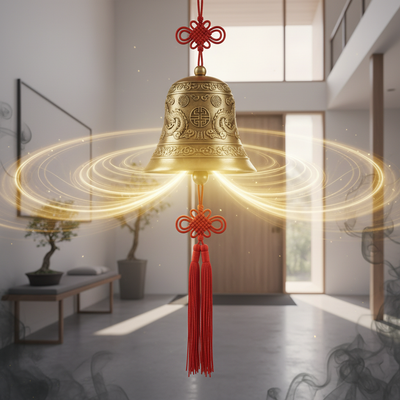
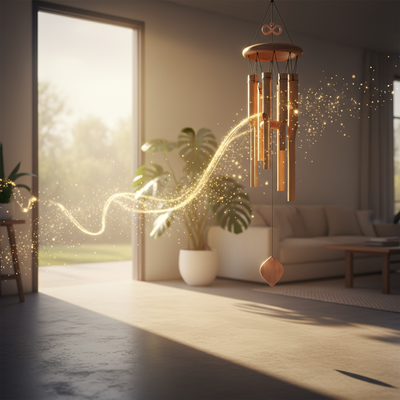
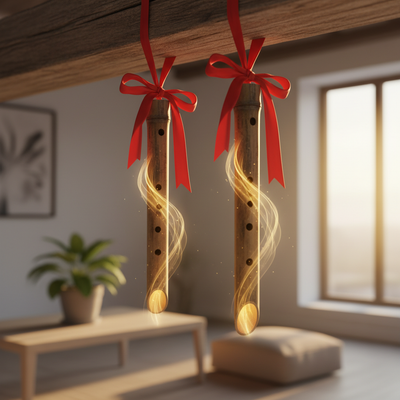
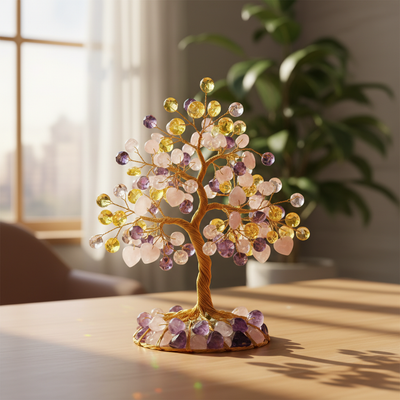


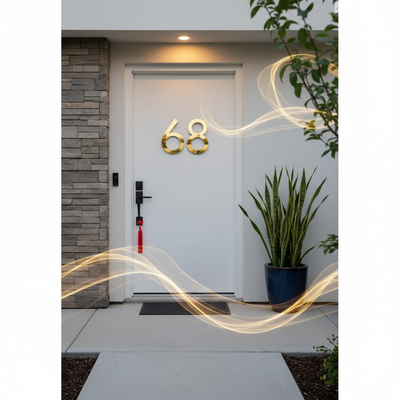
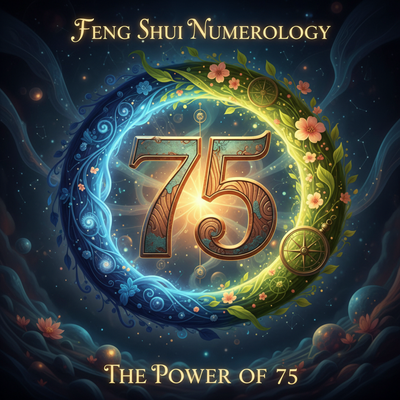
0 comments